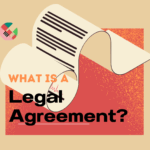Are you looking forward to legally leasing your properties for some extra chunk of income? As a landlord, you will face a lot of confusion in such a scenario. Before taking a step towards leasing or renting, you must know the key difference between Lease and Rental Agreement. Both terms are often used in legal cases and serve different purposes. Here are all the details you need to know to have a clear idea about Lease and Rental Agreement and how it works. Read on!
Table of Contents
What is a Lease Agreement?
A lease agreement, which is often for a longer term, such as a year or more, is a completely binding contract between a landlord and a renter. It describes the tenancy’s terms and conditions, including the amount of the rent due, the security deposit, the length of the lease, and any usage limitations.
The terms of an early lease termination clause, automatic renewal clauses, and rent increases during the lease term are all possible inclusions in a lease agreement. Before signing, it is crucial that both parties carefully read and comprehend the lease agreement’s provisions. Eviction or other legal repercussions, including financial fines, may follow either party’s violation of the lease agreement.
What is a Rental Agreement all about?
A legally enforceable contract between a landlord and tenant that specifies the terms and circumstances of renting a property is known as a rental agreement. It normally contains information like the parties’ names and addresses, the amount and due date for the rent, the term of the lease, and any limitations on how the property may be used, like no smoking or pets.
The agreement may also outline who is responsible for upkeep and repairs, how much of a security deposit is required, and how disputes will be resolved. Before signing, it is crucial for both parties to properly read and comprehend the provisions of the contract in order to prevent any misunderstandings or disagreements that might occur during the tenancy.
DIFFERENCE BETWEEN RENT AGREEMENT AND LEASE AGREEMENT:
| Lease Agreement | Rental Agreement |
| A lease agreement is an important legal contract between the landlord and tenant that lays down the terms and conditions of a long-term rental, typically one year or more. | A rental agreement is a contract agreed on between the landlord and tenant that contains all the terms and conditions of a short-term rental, typically are month or less. |
| A lease agreement is generally more formal and legally binding than a rental agreement. | A rental agreement is generally less formal and may not be as legally binding as a lease agreement. |
| A lease agreement typically includes more details and provisions, such as rules on subletting, pets, and maintenance responsibilities. | A rental agreement may be simpler and more straightforward with fewer provisions and details. |
| A rental agreement may also require a security deposit, but it is often less than one month’s rent. | A rental agreement may also require a security deposit, but it is often less than one month’s rent. |
| A lease agreement usually requires a written notice of termination from either party to end the lease and may include penalties for early termination. | A rental agreement may allow either party to terminate the agreement with little or notice, depending on the terms of the agreement. |
What is a lease?
A lease is an agreement that establishes the terms and conditions of a rental agreement for a particular asset or piece of property between two parties. It is a legally binding arrangement whereby the lessor, the owner of the property, rents it to the lessee, the tenant, for a predetermined period and at a predetermined cost.
Apartments, homes, vehicles, and other types of property are just among a few of the things that can be leased. The length of the rental period, the amount of rent due, the circumstances surrounding the lease’s termination, and any limitations on the use of the asset or property are often included in a lease’s terms.
How should a lease agreement look like?
Depending on the requirements of the lessor and lessee, as well as the regulations of the country where the property is situated, a lease agreement’s format may change. However, a typical lease agreement might have the sections listed below:
- Parties: Both the lessor and the lessee are identified here, along with their names and addresses.
- Property: This section contains a description of the property that is being leased, along with the address and any relevant information.
- Term: The length of the lease, including the beginning and ending dates, is described in this section.
- Rent: This section specifies the amount of rent to be paid, the frequency of payments, and any late payment fees.
- Security Deposit: This section details any needed security deposit requirements, including the amount, how it will be held, and the terms for its return.
- Use of Property: Any limitations on how the property may be used, such as those relating to the use of animals, smoking, or property modifications, may be included in this section.
- The duties of the lessor and lessee with regard to maintenance and repairs are outlined in this section.
- Termination: The terms of the lease’s termination, including any penalties for an early termination, are outlined in this section.
- Governing Law: The laws that will control the leasing agreement are listed in this section.
- Signatures: There are areas here for the signatures of the lessor and the lessee, as well as the signing date of the contract.
What is a lease deed?
A lease deed is a formal legal document that defines the terms of a lease between a lessor (the landlord) and a lessee (the tenant). It acts as a written record of the lease’s terms and conditions, including both parties’ rights and obligations.
Lease agreement between lessor and lessee:
A lease agreement that is between a lessor and lessee is a legal contract that outlines the terms and conditions present in a Rental Agreement for a specific property or asset. The agreement is signed by the lessor (property owner) and lessee (tenant) and establishes their respective rights and responsibilities. The lease agreement normally contains information like the parties’ names and addresses, the type and location of the property being rented, the length of the lease, the monthly rent, and any required security deposits. It might also outline the lessee’s maintenance and repair obligations as well as any usage limitations, such as those on smoking or pets.
What are the Rights of Lessee?
The rights of a lessee (tenant) are normally described in the lease agreement, and they may change based on the terms and conditions of the agreement in question as well as the laws of the country where the property is situated. However, tenants do have the following common rights:
- Right to privacy: The landlord must respect the tenant’s right to privacy and may not enter the rental home without giving the renter due notice unless an emergency arises.
- Right to repairs: The tenant has the right to promptly request repairs from the landlord if the rental property needs them.
- Right to withhold rent: The tenant may be able to withhold rent until the problem is rectified if the rental property is not kept up or repaired as required by law.
- Right to security deposit refund: The tenant is entitled to a refund of their security deposit at the very end of the Lease Term, less any deductions for damages or unpaid rent.
What is a Residential Rental Agreement?
A residential rental agreement, which establishes the terms and conditions of a rental property between a landlord and tenant, is a binding legal document. It contains details such as the parties’ names and addresses, the amount of the rent due, the length of the lease, a description of the property, and maintenance obligations.
What is a Commercial Rental agreement?
An official contract between a landlord and a tenant for the tenancy of a commercial property is known as a commercial rental agreement. It describes the tenancy’s terms and conditions, including the rent payment schedule, the length of the lease, the property’s description, who is responsible for maintenance, and any usage limitations. Before signing, it is crucial that both parties carefully read and comprehend the agreement’s provisions.
What does a Rental Agreement include?
A typical rental agreement may include the following sections:
1. Parties: This section includes the names and addresses of both the landlord and tenant.
2. Property: This section includes a description of the rental property, including the address and any specific details about the property.
3. Term: This section specifies the duration of the rental agreement, including the start and end dates.
4. Rent: This section outlines the amount of rent to be paid, how often it is to required to be paid, and any penalties for late payment.
5. Security Deposit: This section specifies the amount of any security deposit required, how it will be held, and the conditions for its return.
6. Use of Property: This section may include any restrictions that are put on the use of the property, such as restrictions on pets, smoking, or alterations to the property.
7. Maintenance and Repairs: This section specifies the maintenance and repair responsibilities of both the landlord and tenant.
8. Termination: This section outlines the conditions under which the rental agreement can be terminated, including any penalties for early termination.
9. Governing Law: This section specifies the laws that will govern the rental agreement.
10. Signatures: This section includes spaces for the signatures of both the landlord and tenant, as well as the date the agreement is signed.
Difference between Lease and Rental Agreement in India:
In India, the fundamental distinction between a lease arrangement and a rental agreement is its duration. Rental agreements are normally for a shorter length, sometimes month-to-month, whereas lease arrangements are typically for a longer duration, commonly a year or more. While rental agreements require negotiations for new terms, lease agreements may include clauses allowing for rent increases and automatic renewals. Both landlords and tenants should be well aware of the distinctions between a lease and a rental agreement in order to select the one that best suits their needs and situation. It is also critical to be aware that depending on the Indian state or union territory, different laws and rules may apply to leases and rental agreements.
Conclusion:
In conclusion, both a lease agreement and a rental agreement set the terms and circumstances of a tenancy between a landlord and a tenant. They are both legally enforceable contracts.
Before signing, it is crucial for both landlords and tenants to carefully analyze and comprehend the terms and conditions of these agreements to make sure that their rights and obligations are specified and safeguarded. Seeking the counsel of a legal expert might be useful in settling any problems that may emerge if there are any doubts or worries.
A lease is a formal agreement outlining the terms and conditions of a rental property for a predetermined time period, usually six months or longer. It is made between a landlord and a renter. Contrarily, a rental agreement is a month-to-month arrangement that can be ended by any side with the right amount of notice.
One year, two years, or even longer are possible for the duration of a lease. The term of the lease is normally decided upon during the initial negotiations between the landlord and renter.
A lease agreement normally contains details on the rent, the term of the lease, the security deposit needed, maintenance obligations, usage restrictions, and penalties for early termination.
Most of the time, unless both the landlord and tenant agree and sign a written agreement, a lease cannot be canceled early. Rent for the remaining portion of the lease term may be due if a tenant breaches the lease without the landlord’s consent.





